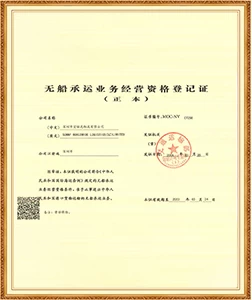Is the container shipping season ending early? SCFI index fell for ten consecutive weeks
Sunny Worldwide LogisticsIt is a logistics company with more than 20 years of transportation experience, specializing in markets such as Europe, the United States, Canada, Australia, and Southeast Asia. It is more of a cargo owner than a cargo owner~

The container shipping season ended early. After hitting a year-high of 3,733.8 points in early July, the Shanghai Export Container Freight Index (SCFI) has fallen for 10 consecutive weeks.
According to the latest data released by the Shanghai Shipping Exchange on September 13, the SCFI index fell 215.63 points last week to 2,510.95 points, a weekly decrease of 7.9%. The freight rates of the four major routes in Europe and the United States continued to fall, with the European line and the Mediterranean line falling more. big.
Last week, the freight rate per FEU from the Far East to the US West Line fell by US1 to US,494, a weekly decrease of 1.98%; the freight rate per FEU from the Far East to the US East Line fell by US3 to US,838, a weekly decrease of 8.96%; The TEU freight rate fell by US8 to US,841, a weekly decrease of 17.86%; the freight rate per TEU from the Far East to the Mediterranean line fell by US8 to US,365, a weekly decrease of 11.98%.
On the near-ocean line, the freight rate per TEU from the Far East to Kansai, Japan, remained unchanged from the previous week, at US8; the freight rate per TEU from the Far East to Kansai, Japan, increased by US from the previous week, to US6; and the freight rate per TEU from the Far East to Southeast Asia was US6. It dropped by US from the previous week to US7; the freight rate per TEU from the Far East to South Korea increased by US from the previous week to US7.
Regarding the recent freight price trends in the container shipping market, analysts believe that the current shipping capacity of European routes is at a high level, and the traditional peak season has a tendency to end early. The market volume has declined, and most shipping companies have launched price reduction strategies to attract cargo, and market competition has intensified. At the same time, transportation demand in the U.S. market lacks growth momentum and the fundamentals of supply and demand lack support. Since there are currently many risk factors in the container shipping market, including tense geopolitical tensions, the threat of strikes at ports in the East United States, China-Europe and China-US trade relations, etc., there will still be greater uncertainty in the future.
Industry insiders pointed out that concerns about strikes in the East United States have increased, and many cargoes on the East Coast route have been transferred to the West Coast, which has slowed down the downward pressure on freight rates in the United States. The old labor contract for dockworkers in the Eastern United States will expire on September 30, but negotiations on the new contract are still unable to reach a consensus. While the outcome of the negotiations is still unclear and the risk of strikes is still there, the volume of goods arriving in the Eastern United States is expected to decrease in the past two or three weeks. The risk of freight rates falling is increasing.
The economic recovery in the Eurozone is facing headwinds and transportation demand is weak. The decline in European and Mediterranean routes increased last week. Although major container shipping companies such as Maersk are supporting freight rates and retaining bargaining chips for the upcoming European line contract negotiations, due to the continued investment in new ships and overtime ships investing in the market, freight rates are likely to continue to fluctuate.
Industry insiders further stated that some Christmas goods have been shipped in advance, and freight rates are expected to be reduced before the end of September, and it is not ruled out that container shipping companies will arrange empty flights on October 1.
In addition to the risk of strikes, the United States has determined to increase tariffs on some Chinese-made products. From September 27, the tariff rate on Chinese-made electric vehicles will be increased to 100%, the tariff rate on solar cells will be increased to 50%, and the tariff rate on electric vehicle batteries, critical minerals, steel, aluminum, masks and shore container cranes will be increased. The tariff rate will be increased to 25%. In addition, tariff increases on other products, including semiconductor chips, will also take effect within the next two years. This policy will undoubtedly have a great impact on Sino-US trade, and the outlook for cargo volume is not optimistic.




















